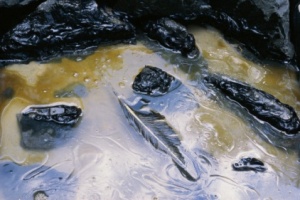 The containment and cleanup of the massive crude oil spill that followed the fatal explosion on the Deepwater Horizon oil rig in 2010 involved tens of thousands of workers. The task of addressing the potential effects of the massive spill on both humans and the Gulf environment fell to a variety of government agencies. The National Institute for Occupational Safety & Health (NIOSH), in collaboration with OSHA, was responsible for managing the occupational safety and health needs of the cleanup workers.
The containment and cleanup of the massive crude oil spill that followed the fatal explosion on the Deepwater Horizon oil rig in 2010 involved tens of thousands of workers. The task of addressing the potential effects of the massive spill on both humans and the Gulf environment fell to a variety of government agencies. The National Institute for Occupational Safety & Health (NIOSH), in collaboration with OSHA, was responsible for managing the occupational safety and health needs of the cleanup workers.
NIOSH has released "Lessons Learned from the Deepwater Horizon Response," a comprehensive analysis on its experience in the Gulf. NIOSH Director Dr. John Howard said the goal of the report is to share what was learned and improve future emergency response.
"The Deepwater Horizon Response (DWHR) effort presented unique challenges in protecting response workers spread across the Gulf region, who performed a wide range of activities in physically and emotionally demanding circumstances," writes Howard in the introduction. "The DWHR presented opportunities to further expand our knowledge and understanding of protecting workers in complex, large-scale emergency responses."
Howard said the report will also facilitate a dialogue between NIOSH and its partners in the government, industry, labor and academia on ways to improve the overall response to both natural and man-made disasters.
"As we build our knowledge of what happens during the response to disasters, so too will we increase our understanding of how to protect response workers," said Howard.
Lessons Learned discusses NIOSH's rostering effort, Health Hazard Evaluations (HHEs), health surveillance, toxicity testing, biological monitoring and mental health. Click here to view the report.
Lessons from a disaster


